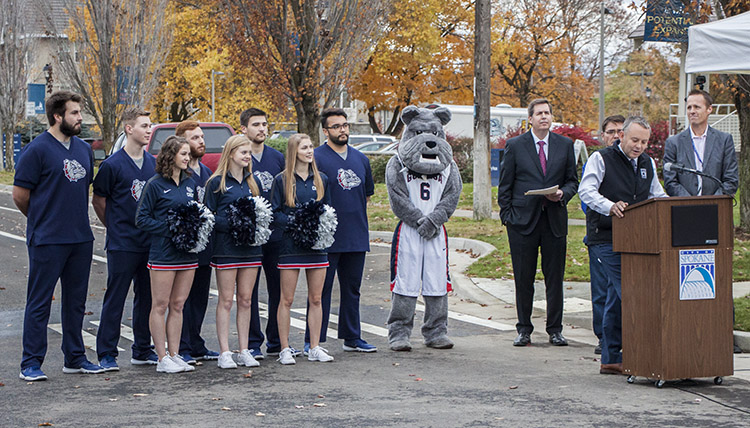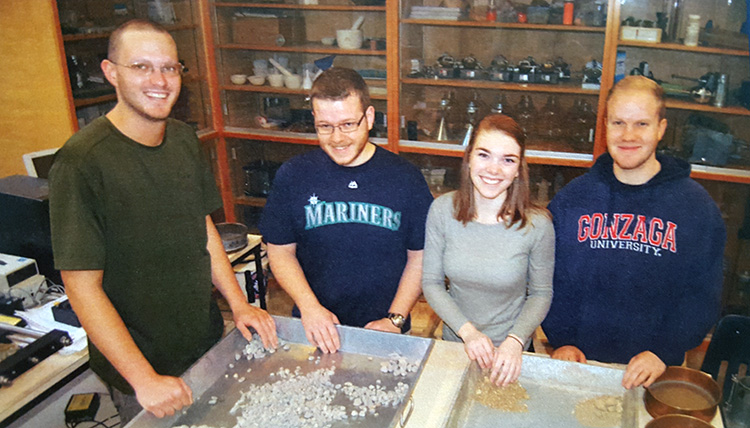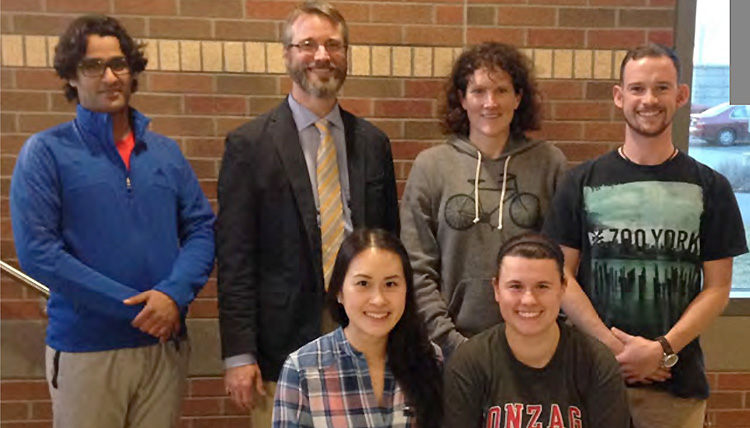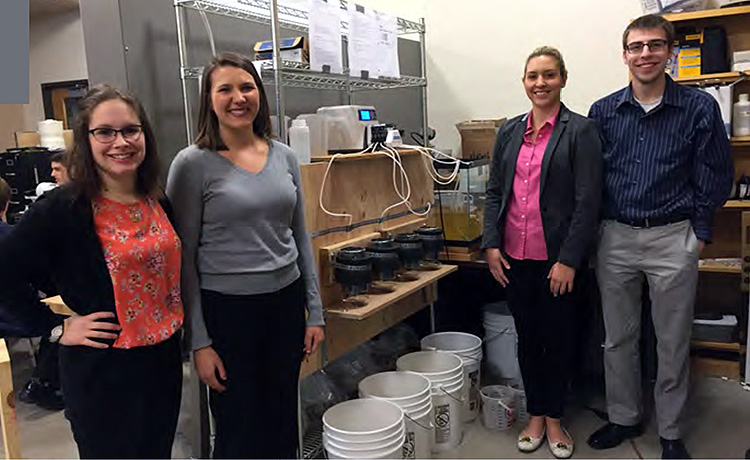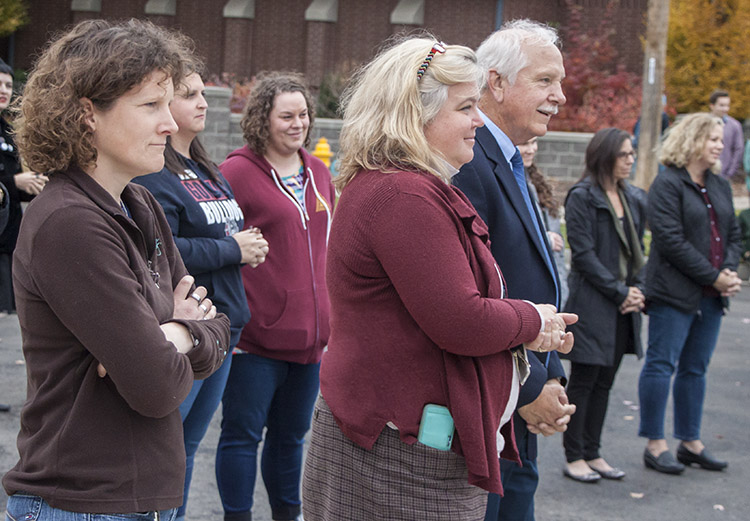SEAS Plays Significant Part in Sharp Reopening

As reported by the Gonzaga News Service, the City of Spokane worked with civil engineering faculty and students for the preliminary design and testing work for the porous asphalt used on the renovated Sharp Avenue. Several members of the School of Engineering & Applied Science attended the short ceremony on Oct. 26, 2018 to officially open the road.
Spokane Mayor David Conden addresses the Gonzaga community & Logan Neighborhood residents at the reopening of Sharp Avenue. He, Dr. Thayne McCullogh, Spike the Bulldog, and members of the Cheer Squad are all standing on a paved surface system tested by past Gonzaga civil engineering students. Two of the squad members (left and center back row) are also current civil engineering students.
The road construction project utilized years of research performed by Gonzaga students. In the summer of 2014, a half-dozen civil engineering students teamed with a chemistry student to start a feasibility study of permeable pavement on arterial roads in cold climates. That study was finished by the Senior Design team of Matt Cupp, Kevin Dixon, Hailey Fitterer and Teague Hatfield (pictured above), who also began to develop designs for the monitoring systems that would be used to analyze the pavement durability, water infiltration capacity, and water treatment effectiveness. Civil Engineering faculty members Dr. Mark Muszynski and Dr. Sue Niezgoda advised them during the process.
Two more teams contributed research in 2015-'16. Abdullah Alotaibi, Malcom Long, Lyn Do and Erin Routledge worked with the City of Spokane to refine the monitoring system design options for the permeable pavement on Sharp Avenue. The students built monitoring system components under test slabs of both porous asphalt and pervious concrete. They then ran experiments to test the functionality of different monitoring system designs and offered recommendations to the City of Spokane on the best configuration for capturing and testing effluent for treatment effectiveness. Again, Muszynski and Niezgoda advised.
That same year, the team of Clara Olson, Emily Zikmund, Sarah Penso, and Garrett Benson explored how well the porous asphalt could filter out pollutants. Their laboratory experiment results were compared to the Department of Ecology's best management practices, and showed porous asphalt was effective at treating pollutants in a lab setting. The reopened Sharp Ave. provides a larger-scale test of the treatment effectiveness of porous asphalt. Dr. Aimee Navickis-Brasch, a senior stormwater engineer for HDR and an adjunct Gonzaga civil engineering faculty, guided them through the project.
Civil Engineering faculty Sue Niezgoda, Ph.D., P.E. and Rhonda Young, Ph.D., P.E. join SEAS Interim Dean Joseph Fedock, Ph.D. at the Sharp reopening. Behind them are Holly Olmstead of the SEAS Dean's Office and Megan Weed of the Center for Engineering Design & Entrepreneurship, which manages the Senior Design projects.

